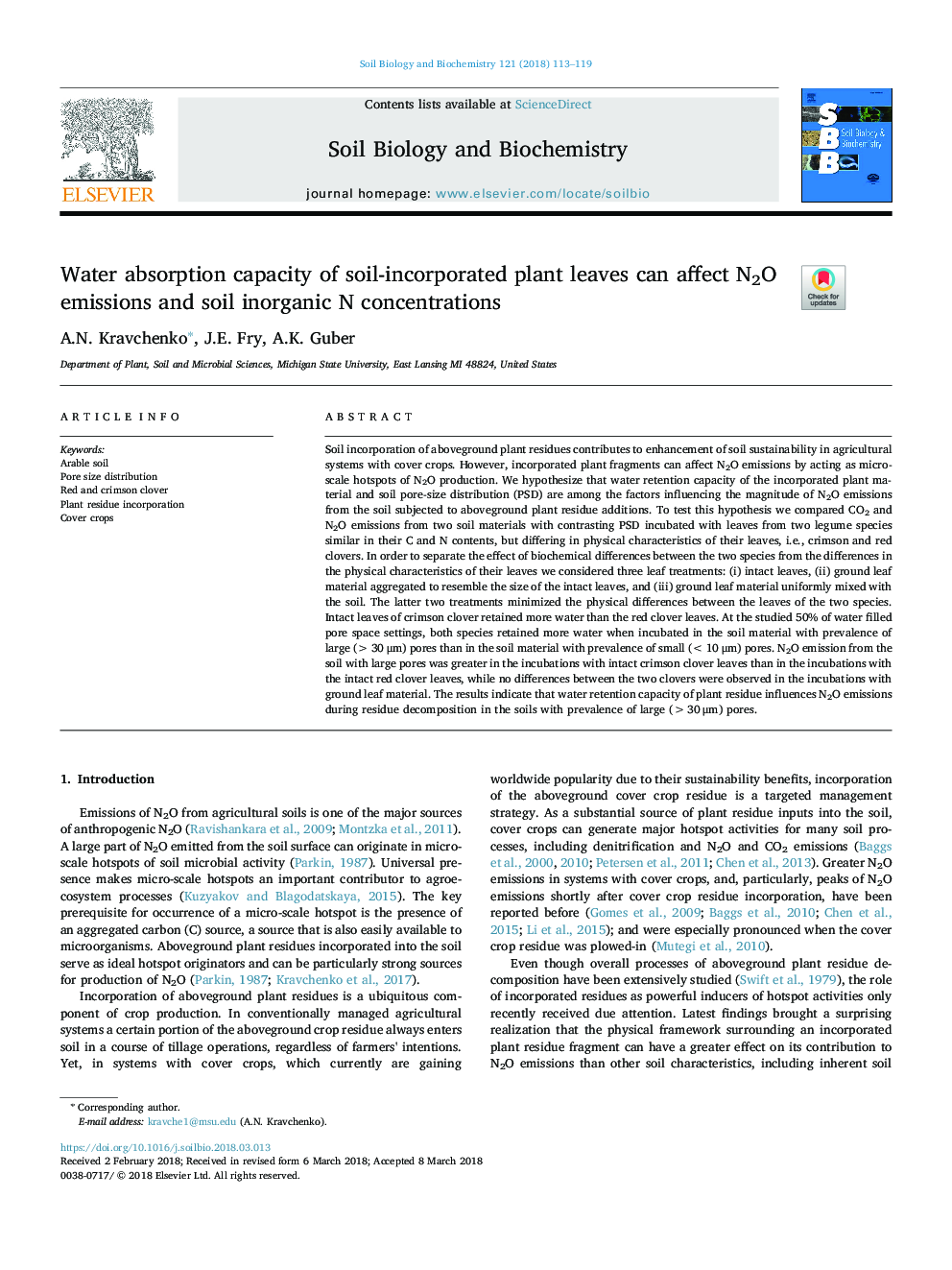| کد مقاله | کد نشریه | سال انتشار | مقاله انگلیسی | نسخه تمام متن |
|---|---|---|---|---|
| 8362780 | 1542563 | 2018 | 7 صفحه PDF | دانلود رایگان |
عنوان انگلیسی مقاله ISI
Water absorption capacity of soil-incorporated plant leaves can affect N2O emissions and soil inorganic N concentrations
دانلود مقاله + سفارش ترجمه
دانلود مقاله ISI انگلیسی
رایگان برای ایرانیان
کلمات کلیدی
موضوعات مرتبط
علوم زیستی و بیوفناوری
علوم کشاورزی و بیولوژیک
دانش خاک شناسی
پیش نمایش صفحه اول مقاله

چکیده انگلیسی
Soil incorporation of aboveground plant residues contributes to enhancement of soil sustainability in agricultural systems with cover crops. However, incorporated plant fragments can affect N2O emissions by acting as micro-scale hotspots of N2O production. We hypothesize that water retention capacity of the incorporated plant material and soil pore-size distribution (PSD) are among the factors influencing the magnitude of N2O emissions from the soil subjected to aboveground plant residue additions. To test this hypothesis we compared CO2 and N2O emissions from two soil materials with contrasting PSD incubated with leaves from two legume species similar in their C and N contents, but differing in physical characteristics of their leaves, i.e., crimson and red clovers. In order to separate the effect of biochemical differences between the two species from the differences in the physical characteristics of their leaves we considered three leaf treatments: (i) intact leaves, (ii) ground leaf material aggregated to resemble the size of the intact leaves, and (iii) ground leaf material uniformly mixed with the soil. The latter two treatments minimized the physical differences between the leaves of the two species. Intact leaves of crimson clover retained more water than the red clover leaves. At the studied 50% of water filled pore space settings, both species retained more water when incubated in the soil material with prevalence of large (>30â¯Î¼m) pores than in the soil material with prevalence of small (<10â¯Î¼m) pores. N2O emission from the soil with large pores was greater in the incubations with intact crimson clover leaves than in the incubations with the intact red clover leaves, while no differences between the two clovers were observed in the incubations with ground leaf material. The results indicate that water retention capacity of plant residue influences N2O emissions during residue decomposition in the soils with prevalence of large (>30â¯Î¼m) pores.
ناشر
Database: Elsevier - ScienceDirect (ساینس دایرکت)
Journal: Soil Biology and Biochemistry - Volume 121, June 2018, Pages 113-119
Journal: Soil Biology and Biochemistry - Volume 121, June 2018, Pages 113-119
نویسندگان
A.N. Kravchenko, J.E. Fry, A.K. Guber,